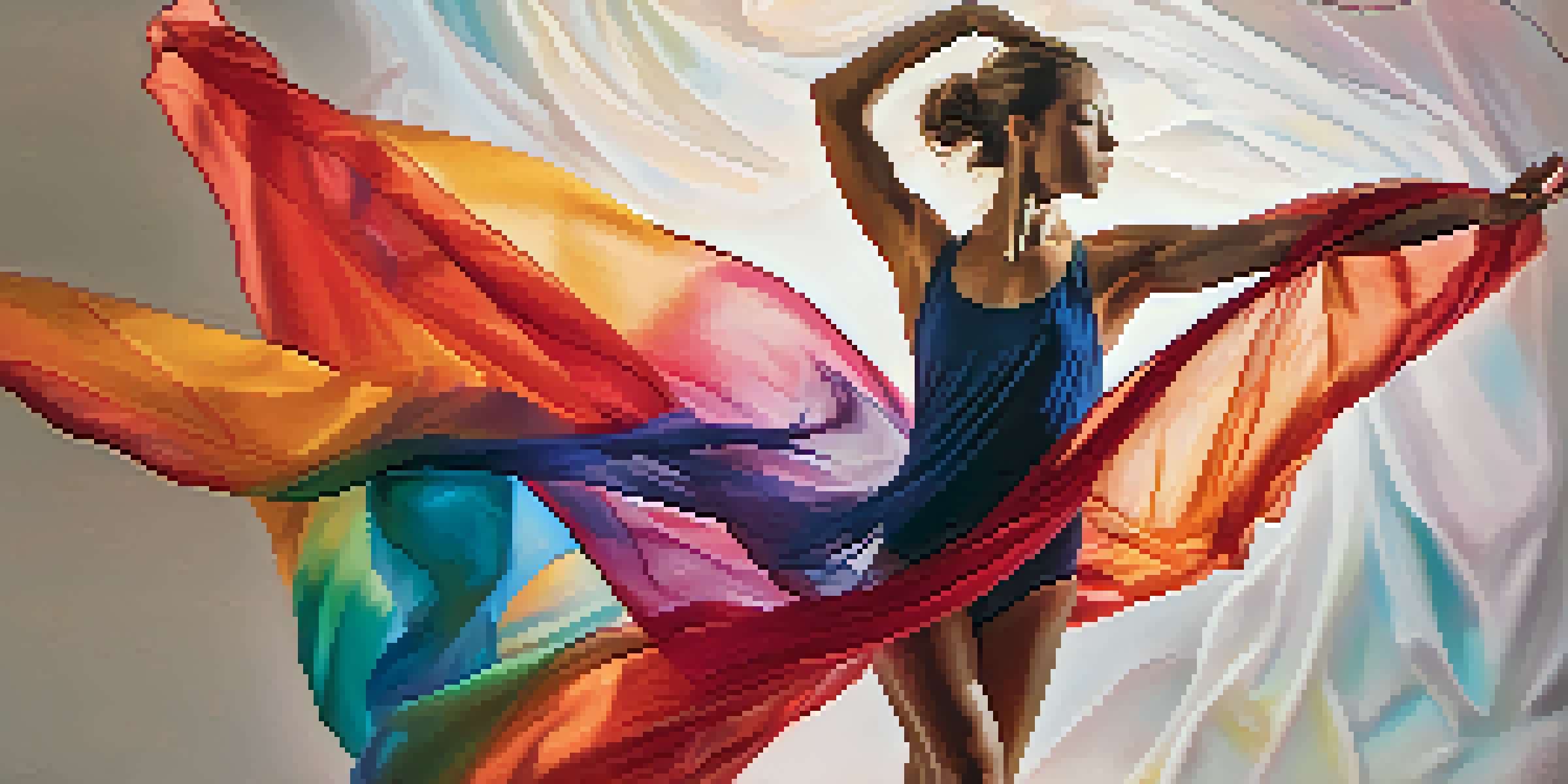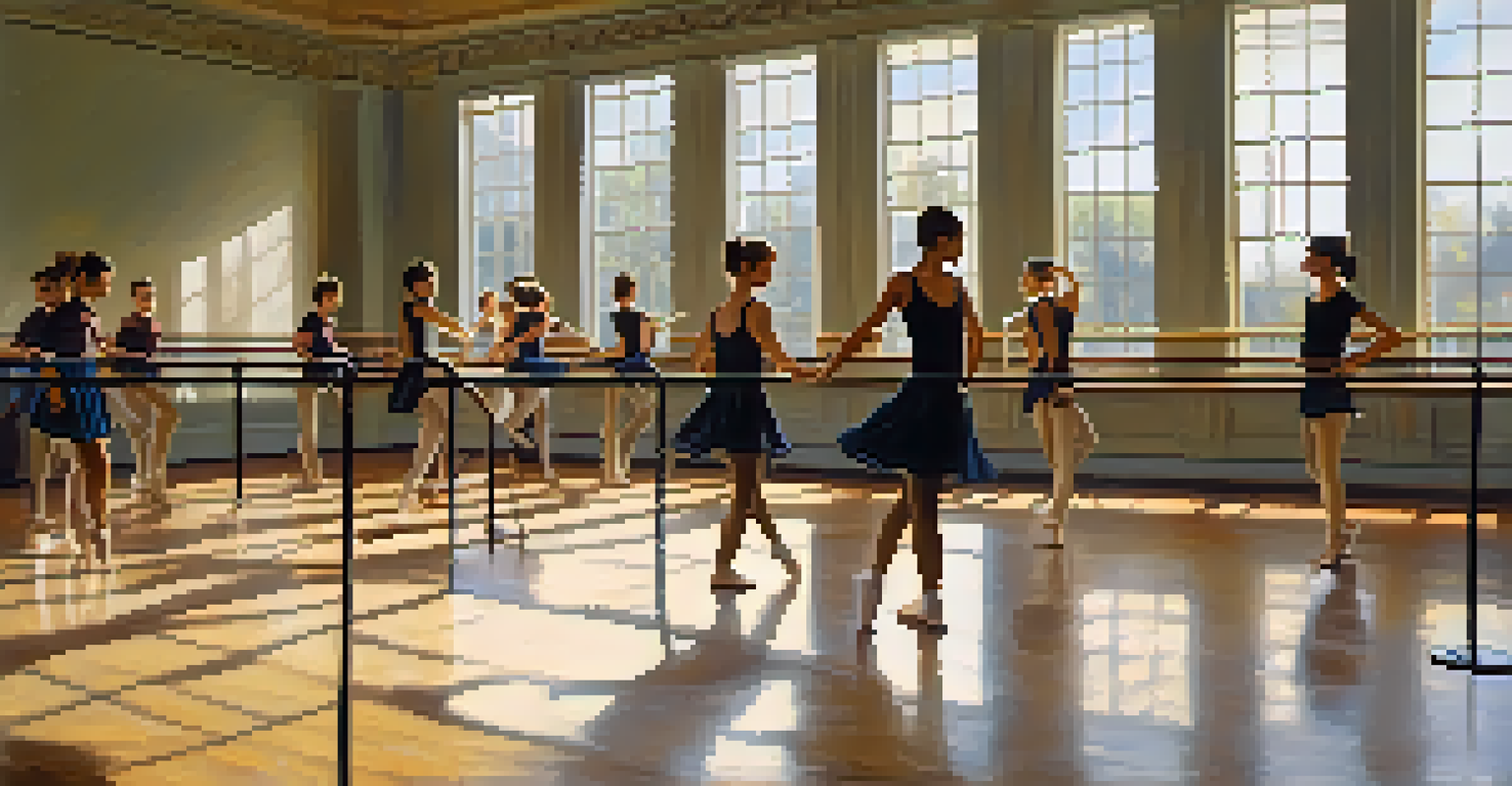Exploring the Use of Labanotation in Contemporary Dance

What is Labanotation and Its Historical Roots?
Labanotation is a unique system of movement notation created by Rudolf Laban in the early 20th century. It serves as a visual language for recording and analyzing dance movements, much like musical notation does for music. By understanding its historical significance, we can appreciate how it has shaped the landscape of dance documentation and education.
Dance is the hidden language of the soul.
Developed during a time when dance was evolving rapidly, Labanotation provided a means to preserve choreography that might otherwise be fleeting. This system has been instrumental in bridging the gap between performance and education, allowing dancers to learn from past works. Today, it remains a vital resource for choreographers and dance scholars alike.
Since its inception, Labanotation has been adapted and embraced by various dance forms, including contemporary dance. Its ability to capture complex movements in a structured format makes it an invaluable tool for artists who wish to expand their creative boundaries.
The Basics of Reading Labanotation
Reading Labanotation might seem daunting at first, but it follows a logical structure that becomes easier with practice. The symbols represent different elements of movement, such as direction, level, and energy. Think of it like learning a new language; with time and exposure, the symbols begin to tell a story.

For example, a dot might represent a specific body part, while lines indicate the path taken during a movement. By combining these symbols, dancers can visualize choreography and understand the nuances of a piece before stepping onto the stage. This understanding can enhance their performance and deepen their connection to the work.
Labanotation Preserves Choreography
Labanotation serves as a crucial tool for documenting and analyzing dance movements, ensuring that innovative choreography is not lost over time.
Many dance schools now incorporate Labanotation into their curricula, helping students gain a deeper understanding of movement. As they learn to read and interpret these symbols, they become more versatile dancers, capable of engaging with a wide array of choreographic styles.
Why Labanotation Matters in Contemporary Dance
Contemporary dance is known for its fluidity and innovation, often pushing the boundaries of traditional dance forms. Labanotation offers a way to document these experimental movements, providing a reference point for future generations. This is crucial in ensuring that groundbreaking choreography is not lost to time.
The body says what words cannot.
Additionally, Labanotation can facilitate collaboration between choreographers and dancers, allowing for a shared language that enhances communication. For instance, a choreographer can notate a complex sequence, and dancers can refer back to it, ensuring accuracy and consistency in their performances. This collaborative aspect is vital in the fast-paced world of contemporary dance.
Moreover, as contemporary dance continues to evolve, Labanotation adapts to capture new styles and techniques. By integrating this system, artists can maintain the integrity of their work while inviting reinterpretation and innovation.
Labanotation in Dance Education and Training
In dance education, Labanotation serves as a powerful tool for teaching and learning choreography. It allows students to not only memorize movements but also understand the underlying principles of dance. This holistic approach fosters a deeper appreciation for the art form and encourages creativity.
Many universities and training programs now offer courses specifically focused on Labanotation. These classes equip students with the skills to read, write, and utilize the notation system in their own choreography. As a result, dancers emerge from their training as well-rounded artists, capable of engaging with both traditional and contemporary works.
Enhances Dance Education
Incorporating Labanotation into dance curricula fosters a deeper understanding of movement, allowing students to become versatile artists.
Furthermore, Labanotation promotes critical thinking and analysis in dance. Students learn to dissect movements, exploring how different elements come together to create a cohesive piece. This analytical mindset prepares them for the complexities of the dance world, where adaptability and creativity are essential.
Case Studies: Labanotation in Action
Several renowned choreographers have successfully integrated Labanotation into their creative processes. For instance, the work of Merce Cunningham often utilized this system to document his innovative choreography, allowing future dancers to interpret his pieces accurately. By studying these case studies, we can see the tangible benefits of Labanotation in action.
Another example is the use of Labanotation in large-scale dance productions, where multiple choreographers must collaborate. By notating their movements, they can ensure a consistent vision across the entire performance. This collaborative use of Labanotation highlights its versatility and relevance in contemporary dance.
These case studies not only demonstrate the practical applications of Labanotation but also inspire a new generation of choreographers to embrace this powerful tool. As they witness the successful integration of notation into the creative process, they may find themselves eager to explore its possibilities in their own work.
Challenges and Misconceptions about Labanotation
Despite its many benefits, Labanotation is often misunderstood or overlooked by some in the dance community. A common misconception is that it is only for classical or traditional forms of dance. In reality, Labanotation is incredibly adaptable and can enhance any style, including contemporary dance.
Another challenge is the learning curve associated with mastering Labanotation. Some dancers may feel intimidated by the symbols and terminology, which can discourage them from exploring this valuable resource. However, with proper guidance and practice, anyone can learn to read and write Labanotation, unlocking new creative possibilities.
Facilitates Collaboration in Dance
Labanotation provides a shared language for choreographers and dancers, enhancing communication and ensuring consistency in performances.
Furthermore, as the dance landscape continues to shift, it's essential to advocate for the integration of Labanotation in contemporary dance. By dispelling myths and showcasing its relevance, we can encourage more artists to embrace this notation system, ensuring that the art of dance continues to evolve and thrive.
The Future of Labanotation in Dance
As we look ahead, the role of Labanotation in the dance world is likely to expand even further. With advancements in technology, there are new tools and platforms emerging that make Labanotation more accessible than ever. For example, digital applications are being developed to help dancers learn and create using Labanotation in real-time.
Moreover, the increasing emphasis on documentation in the dance community has sparked renewed interest in Labanotation. Choreographers and educators recognize the importance of preserving their work for future generations, leading to a greater demand for skilled Labanotation practitioners. This trend could pave the way for a new wave of artists who specialize in this essential skill.

Ultimately, the future of Labanotation in contemporary dance looks bright. As more artists and educators adopt this system, we can expect to see even more innovative choreography and a deeper understanding of movement, enriching the dance community as a whole.